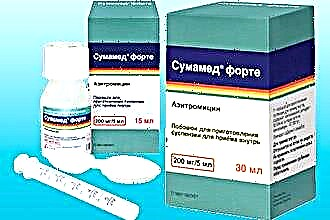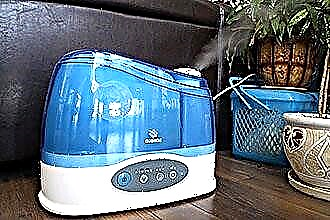In childhood, diseases affecting the organs of the nasopharynx occur quite often, while it is not possible to completely protect the body from infection. One of these diseases is laryngotracheitis - an inflammatory process that occurs in the larynx and the upper half of the trachea. These organs are responsible for performing a number of vital functions in the body of any person, including participating in the transport of air to the lungs.
Laryngotracheitis in children is often accompanied by laryngeal edema, in which a narrowing of the gap (stenosis) in the throat occurs, which makes breathing very difficult up to suffocation. It is in childhood that the likelihood of stenosis is higher, which is mainly due to the structural features of the organs: small diameter, muscle hypertonicity, a large amount of lymphoid tissue.
Causes
 For the correct and timely treatment of laryngotracheitis, it is necessary to know the causes of this disease. Moreover, this should be done as soon as possible, because acute laryngotracheitis in children develops rapidly and can quickly become the cause of complete blockage, blocking the possibility of air entering the lungs.
For the correct and timely treatment of laryngotracheitis, it is necessary to know the causes of this disease. Moreover, this should be done as soon as possible, because acute laryngotracheitis in children develops rapidly and can quickly become the cause of complete blockage, blocking the possibility of air entering the lungs.
The causes of laryngotracheitis can be different:
- viral diseases (parainfluenza, influenza virus);
- bacterial diseases (mycoplasma);
- as a complication of various pathologies of the nasopharynx, for example, sinusitis;
- various allergic reactions, especially if the child is predisposed to them;
- prolonged loud screaming, overstrain of the vocal cords;
- hypothermia;
- finding a child in a room with very dry, dusty or smoky air.
Symptoms
After exposure to the child's body of one of the factors that increase the risk of developing laryngotracheitis, symptoms characteristic of this disease may appear. As a rule, signs of illness appear suddenly, most often at night during sleep. In a child's sleep, an increased tone of the parasympathetic nervous system is observed, which contributes to an increase in the contractile activity of the muscles of the trachea and bronchi, while the horizontal position contributes to a deterioration in the drainage capacity of the lungs.
The main symptoms of laryngotracheitis:
- nervousness, increased excitability;
- heavy, labored, loud breathing (increased duration of inspiration); sore throat, rawness, feeling of a foreign object in the chest area;
- severe hoarseness, in the later stages of the disease, the complete disappearance of the voice (aphonia) is possible;
- dry, barking, annoying cough that occurs against the background of a decrease in the lumen in the trachea;
- with severe laryngeal edema due to a strong lack of oxygen, pallor of the skin, cyanosis of the nasolabial triangle occurs.
Diagnostics
Based on the symptoms of the disease, the doctor (pediatrician or otolaryngologist) may suggest acute laryngotracheitis in children. However, in order to prescribe a more effective treatment, it is necessary to carry out a number of procedures that will help to find out the cause of the disease, as well as the stage of development of laryngotracheitis.
- At the first stage of diagnosis, a visual examination of the patient is carried out, an analysis of the possible causes of the disease is carried out. The doctor checks the soreness of the larynx with palpation, assesses the degree of enlargement of the lymph nodes.
- To clarify the diagnosis, the doctor may prescribe a laryngoscopy and tracheoscopy (examination of the nasopharynx organs using a special endoscope device). This method allows you to identify the presence of redness, swelling, assess the amount of mucus in the throat. Also, with the help of laryngoscopy, you can get information regarding the width of the glottis.
- A clinical analysis of blood and urine will help identify the type of infection (viral or bacterial) that caused the disease, as well as assess the severity of the inflammatory process.
- A throat swab may be needed to determine the type of pathogenic bacteria causing laryngotracheitis.
Treatment
Treatment should take place under the supervision of a doctor and include a set of measures aimed at both treating the cause of the disease and eliminating its main symptoms and preventing possible complications, especially if laryngotracheitis is diagnosed in an infant.
Comprehensive treatment of laryngotracheitis includes the following measures:
- Providing bed rest.
- Reducing the load on the vocal apparatus, which significantly speeds up recovery and eliminates the possibility of complications on the vocal cords, which are formed in childhood.
Important! It should be remembered that whispering also puts a significant strain on the vocal cords.
- Providing fresh air supply by frequent ventilation of the room. It is also necessary to maintain the required level of humidity (at least 50%) in the room where the child is. This can be done with the help of regular wet cleaning, wet diapers hanging over the bed, spraying water with a spray bottle, and a special device - a humidifier.
- Drinking plenty of fluids. The more the child drinks, the better the nasopharyngeal mucosa is moistened, reducing the manifestations of dry cough, and the general intoxication of the body also decreases. First of all, the use of alkaline water is shown, such as Borjomi, Polyana Kvasova. You can make your own alkaline drink by dissolving a teaspoon of baking soda in a liter of water. As a drink for laryngotracheitis, you can use herbal preparations, non-acidic compotes, fruit drinks. The main thing is that the child is not allergic to the components that make up them.

- A balanced diet, avoiding the use of irritating foods. It is necessary to exclude too hot and cold food, solid food, spicy, salty foods from the child's diet. You also need to stop drinking carbonated drinks. The menu of a patient with laryngotracheitis should include warm, dietary, porridge-like food, enriched with vitamins.
- Walking in the acute period of the disease is contraindicated. You should refuse to go outside in cold, windy weather in order to avoid hypothermia, as well as in heat with insufficient air humidity and a large accumulation of dust, which can only aggravate the patient's condition.
- If, after going to a doctor and passing the necessary tests, it turned out that laryngotracheitis is caused by a bacterial infection, it is necessary to treat with antibiotics. In childhood, drugs of the macrolide group or of the penicillin series are most often used, for example, Sumamed, Augmentin. However, it should be remembered that only a specialist should prescribe an antibiotic, based on the general condition of the patient, as well as the type of pathogenic organism that caused the disease.
Important! Complete antibiotic treatment is required. It is strictly forbidden to independently stop taking the drug even if the symptoms of laryngotracheitis disappear.
- If it is established that laryngotracheitis is caused by a viral infection, then in this case, doctors prescribe antiviral drugs, for example, Groprinosin, Remantadin, Anaferon and others.
- Allergic laryngotracheitis most often occurs as a result of inhalation of irritants with air, therefore, first of all, it is necessary to eliminate the cause, if possible, and then give the child an antihistamine, for example, Suprastin, Loratadin, Diazolin, Zodak.In severe cases, injections of antiallergic drugs may be required to quickly stop the edema.
- To prevent the threat of stenosis, as well as reduce coughing attacks, with laryngotracheitis, doctors often prescribe drugs that reduce spasm (Salbutamol, Berodual and others). It is more expedient for children to use these medicines in the form of inhalations using a special device - a nebulizer.
- If laryngotracheitis is accompanied by a cough with the formation of sputum, the use of drugs that thin the viscous secretion and improve its discharge, for example, Erespal, Ambroxol, ACC, is indicated.
Traditional methods of treatment
As practice shows, in the early stages of the disease, not only drug treatment is effective, but also the treatment of laryngotracheitis by folk methods. Traditional medicine recipes can be used in complex therapy to relieve the symptoms of the disease in children.
- If a child has laryngotracheitis, gargling is recommended. For this, infusions and decoctions of medicinal plants are used, which have anti-inflammatory, antiseptic and expectorant effects. For example, boiled beet juice, honey solution (1 teaspoon per 200 ml of water). The rinsing procedure must be carried out at least three times a day until the symptoms disappear completely.
- At the first signs of stenosis caused by acute laryngotracheitis, it is necessary to calm the child, provide an influx of fresh air, increase
 humidity, offer the child a drink. In this case, distracting procedures are effective, for example, hot foot baths (provided there is no elevated temperature), which will ensure the outflow of blood from the larynx region and reduce swelling.
humidity, offer the child a drink. In this case, distracting procedures are effective, for example, hot foot baths (provided there is no elevated temperature), which will ensure the outflow of blood from the larynx region and reduce swelling. - Inhalation with alkaline solutions, such as Borjomi, is also effective for laryngotracheitis. It is also better to use a special inhaler for this, as hot vapors can aggravate the situation by causing blood flow to the trachea and larynx, increasing the swelling.
Prophylaxis
Any disease is better prevented than cured, especially when it comes to the child's body. Therefore, an important aspect in the treatment of laryngotracheitis is the implementation of preventive measures.
So, primary prevention includes a set of measures aimed at preventing the development of the disease:
- timely treatment of chronic diseases;
- limiting the child's visits to crowded places (shops, public transport), especially in the autumn-winter period, to reduce the likelihood of contact with an infection;
- elimination of excessive stress on the vocal cords;
- prevention of burns of the laryngeal mucosa, for example, after eating hot food or drinks, inhaling hot steam, as well as injuries;
- protection of the child's respiratory system from inhaling highly polluted, dusty air, as well as secondhand smoke.
With regard to secondary prevention, it includes a set of measures aimed at timely treatment of the acute stage of the disease, ensuring the protection of the child from possible complications, as well as preventing the transition of laryngotracheitis to a chronic form.


 humidity, offer the child a drink. In this case, distracting procedures are effective, for example, hot foot baths (provided there is no elevated temperature), which will ensure the outflow of blood from the larynx region and reduce swelling.
humidity, offer the child a drink. In this case, distracting procedures are effective, for example, hot foot baths (provided there is no elevated temperature), which will ensure the outflow of blood from the larynx region and reduce swelling.

